Key Points
Pectus excavatum is an unusual deformity of the breast bone, which results in compression of the heart and lungs
Early treatment is ideal
An assessment of x-rays of the chest are needed to determine if the deformity needs to be corrected
Prognosis is fairly good
What is it?
- This is a condition of young puppies and kittens
- The breast bone, also called the sternum is deformed such that the chest cavity size is compromised (see photo below with pen placed in the deformity)

Diagnostics
- Generally only radiographs of the chest are taken
- If a heart murmur is detected, ultrasound should be considered

Treatment
- If the pectus is mild it is not treated
- This condition is treated if the patient has symptoms or the chest is compromised, based on radiographs
- The age of the patient at the time of treatment should be 8 weeks or older; the youngest patient that received treatment was 7 weeks old
- There are two ways this condition is repaired
- Surgical removal of the affected portion of the sternum and replacement with a graft
- Use of a cast with sutures around the sternum (see below)
- First a fiberglass cast is molded to a normal shape of the bottom of the chest
- Then sutures are placed around the affected sternabrae (start caudally and the sutures are placed; pull up on the preceding suture so that it will pull the sternum away from the lungs and heart, as the next suture is placed); a piece of plastic (plastic bag) that has the same dimensions as the cast is placed exactly in position on the chest as the cast will normally be seated (the two black lines on the chest denote the hind extend of the cast); markings are made on the plastic template indicate where the sutures should run through the cast

- The plastic template is placed on the fiberglass cast
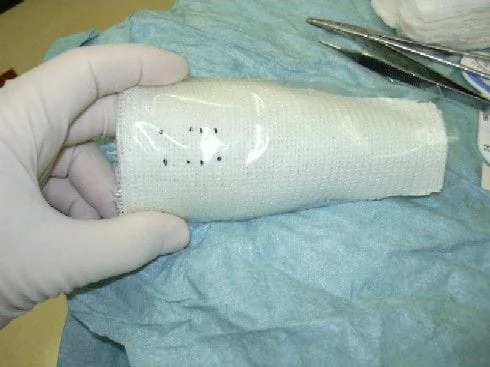
- Holes are drilled in the cast for the sutures
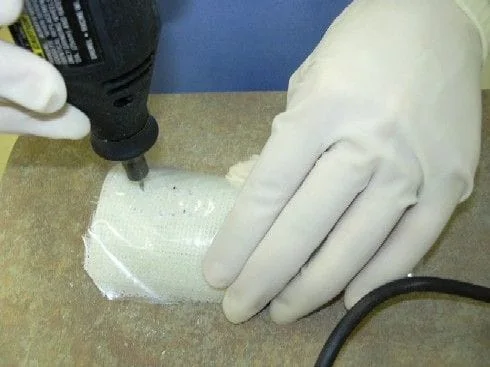
- The sutures are placed through the holes in the cast
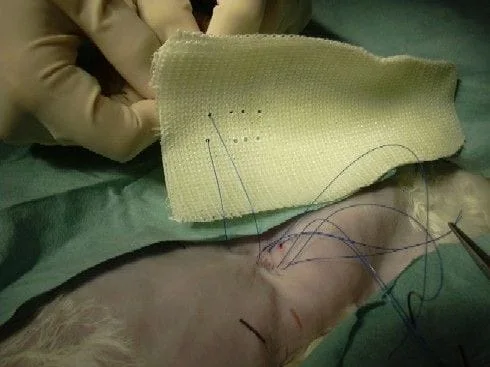
- The sutures are tied in place starting from front to back; the cast is then secured in place with an external bandage that has a figure 8 conformation around the front limbs
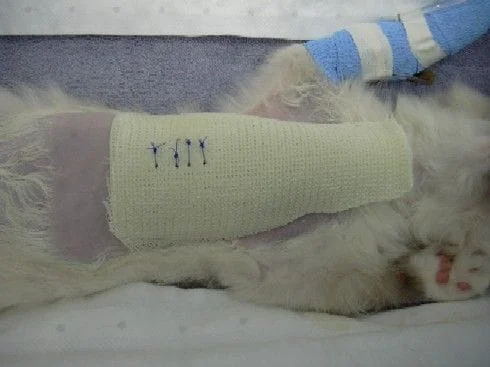
- Before and after radiographs of the chest; the “S” denotes the position of the pectus before and after surgery

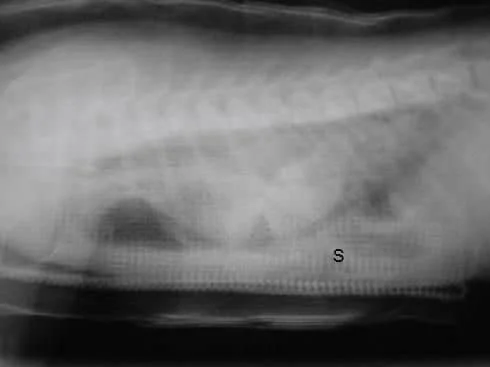
Aftercare
- Watch for breathing difficulties, especially during the first 2 days after surgery
- The cast is kept in place for about 6 weeks
- Antibiotics are prescribed for 2 weeks
- The bandage material is changed every 2 weeks
- Exercise is limited while the cast is in place
- Manual lateral chest compressions (chest massage) are done to help decrease the flattening of the chest; these massages are continued until the pet is mature
Complications
- Anesthetic death
- Pneumothorax – air leaking in chest due to penetrating the lungs during needle passage
- Bleeding into chest – puncture of heart with needle or laceration of internal thoracic artery
- Rub sores on underside of cast (common), but resolve once the cast has been removed – smell the cast daily to make sure that there is no foul odor
- Infection
- Failure of the splinting to provide a successful outcome, necessitating surgical excision of the affected sternabrae


